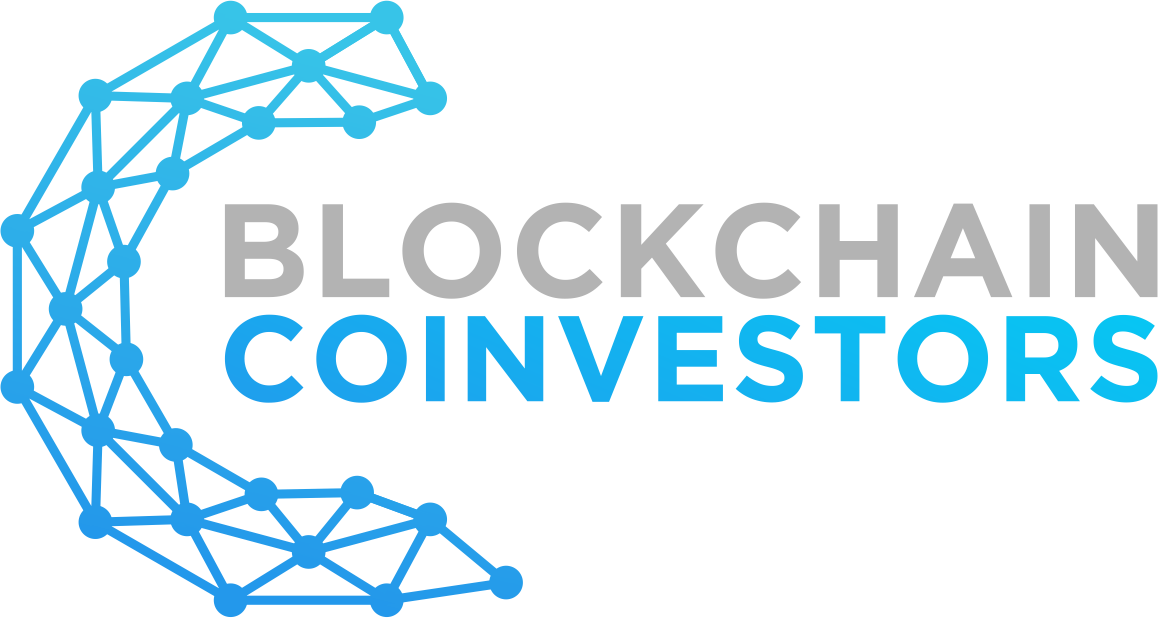Regulation Finally Arrives, And Wall Street Is Paying Attention
Regulation Finally Arrives, And Wall Street Is Paying Attention
Dear Readers,
For more than two years, this letter has anticipated the sweeping regulatory changes now underway. We’ve discussed how Europe has consistently outpaced the U.S. in developing thoughtful frameworks for blockchain. And we've emphasized that clear, common-sense regulation in the U.S. is critical for legitimizing and accelerating the industry.
Now, after what has felt like an interminable wait, those forecasts are finally becoming reality (knock on wood!). Major pieces of legislation are not only being introduced—they're passing Congress and being signed into law.
We also believe it’s helping reignite animal spirits across public markets tied to blockchain and crypto. IPOs and SPACs are heating up, and digital asset treasuries are attracting significant institutional capital. What was once a frozen market under the prior administration now appears to have a regulatory foundation forming, clearing a path for both institutional and retail investors to participate in the digital future of finance.
The industry's long-standing wish list—stablecoin rules, market structure clarity, and anti-CBDC safeguards—is finally moving. Just this month, Congress passed the first item: stablecoin legislation via the GENIUS Act. It’s a landmark moment—the first substantive crypto bill to become law. Meanwhile, the market structure bill has cleared the House with strong bipartisan support and now heads to the Senate.
We're holding our breath—but longtime followers of this space should be encouraged. Below, we dig into why these developments matter, what’s already been achieved, and what still lies ahead.
Why This Matters
Digital assets do not fit easily into the current U.S. financial regulatory framework—and that’s been a major problem. In practice, the lack of clarity has left even the most prominent crypto businesses in legal limbo. Technically speaking, much of the industry operates in a gray zone.
Take Coinbase: a public company listed on NASDAQ with a market cap that has touched $100 billion. And yet, under current law, its core business model doesn’t cleanly map onto any existing financial regulatory category. This creates enormous uncertainty—particularly for the most risk-averse institutional investors.
The crux of the issue lies in how U.S. law currently defines financial instruments. Broadly, there are two categories:
Commodities, overseen by the CFTC, typically have no issuer and can be traded freely (like oil, corn, or gold). They don't require registration.
Securities, regulated by the SEC, involve an issuer and must be registered to be offered to retail investors (e.g., Apple stock).
This brings us to the Howey Test, a 1946 Supreme Court ruling that determines whether something is a security. The test defines an "investment contract"—and therefore a security—as something that satisfies all four conditions:
An investment of money
In a common enterprise
With an expectation of profit
Driven by the efforts of others
So where does something like Bitcoin or Ethereum fit?
These digital assets don't have traditional issuers (e.g., common enterprise). They’re governed by open-source code and executed across decentralized global networks. They don’t comfortably fit the mold of either commodity or security—but U.S. law hasn’t had a third category.
Then consider a U.S. dollar–backed stablecoin—a digitally represented version of the dollar, backed by treasuries or cash equivalents. Is it a security? A currency? A commodity?
This regulatory ambiguity has prevented the world’s largest institutions from fully engaging with the ecosystem. Without legal clarity, many prefer to stay on the sidelines.
But that’s rapidly changing.
The GENIUS Act
The GENIUS Act of 2025 marks a watershed moment for digital finance in the U.S., creating the first comprehensive legal framework for stablecoins. No longer treated as speculative novelties, dollar-backed stablecoins are now formally recognized as part of the nation's financial infrastructure.
At its core, the law prioritizes safety, transparency, and the integrity of the U.S. dollar. It introduces stringent requirements: full reserve backing, independent audits, federal licensing, and clear consumer protections. Importantly, it balances risk mitigation with innovation—allowing businesses and investors to finally engage with digital dollars under well-defined rules.
These are the key elements of the Act.
Reserve Requirements: Backed 1:1 with Safe, Liquid Assets
All payment stablecoins must be fully backed by high-quality, U.S. dollar–denominated assets. Specifically:
Permitted Collateral
U.S. dollars held in insured U.S. banks
Short-term U.S. Treasury securities (e.g., T-bills)
Other high-quality liquid assets (HQLA) explicitly approved by regulators
Prohibited or Restricted forms of Reserve Assets
Crypto assets (e.g., Bitcoin, ETH)
Corporate bonds, equities, or riskier debt instruments
Rehypothecation (i.e., lending or reusing reserve assets)
Fractional reserve practices
Additional Requirements
Must maintain a 1:1 reserve ratio at all times
Require monthly public disclosures of reserve composition
Subject to independent, third-party audits
Reserve assets must be segregated from the issuer’s own funds
Licensing and Oversight: Three Clear Paths for Issuers
To issue a stablecoin in (or into) the U.S., an issuer must qualify as a Permitted Payment Stablecoin Issuer (PPSI). The law provides three distinct regulatory pathways:
Federal Bank Subsidiary
A U.S. insured depository institution (bank or credit union) may issue stablecoins via a regulated subsidiary
Oversight: OCC, Federal Reserve, or FDIC
Non-Bank Federal Charter
Fintech and crypto firms may apply to the OCC for a specialized federal charter
Treated like a limited-purpose trust or bank, with full supervisory and prudential requirements
State-Licensed Issuer
Available to issuers with less than $10 billion in outstanding stablecoins
Must operate in a state with a certified stablecoin regime
Certification is reviewed by a federal Stablecoin Review Committee, composed of the Fed, Treasury, and FDIC
By requiring regulatory compliance, strong capital backing, and clear consumer protections—including coinholder priority in insolvencies—the GENIUS Act delivers much-needed guardrails without stifling innovation. It transforms stablecoins from a legal gray zone into a legitimate financial tool, opening the door for mainstream adoption, enterprise integration, and large-scale investment.
The Immediate Institutional Impact
The passage of the GENIUS Act has already triggered swift and significant reactions from some of the world’s largest financial institutions. With legal uncertainty finally lifted, banks are no longer on the sidelines—they’re leaning in.
Here’s a snapshot of recent developments:
July 16, 2025 – JPMorgan Chase (Q2 Earnings Call)
CEO Jamie Dimon confirmed that JPMorgan will move forward with its private deposit token (JPMD) initiative and is actively exploring broader stablecoin efforts. He emphasized the importance of staying competitive in this space, stating:
“We’re going to be involved in stablecoins.”
July 15, 2025 – Citigroup (Q2 Earnings Call)
CEO Jane Fraser announced that Citi is considering the issuance of a Citi-branded stablecoin and expanding Citi Token Services to support real-time settlements. She explicitly tied these initiatives to the new regulatory clarity provided by the GENIUS Act.
Mid-July 2025 – Bank of America
CEO Brian Moynihan revealed that BofA is now actively exploring stablecoin applications, noting that the legal clarity provided by the new law enables the bank to enter the space with confidence.
Early July 2025 – Goldman Sachs & Morgan Stanley
Goldman Sachs is conducting research into stablecoin solutions and has initiated a partnership with BNY Mellon focused on asset tokenization.
Morgan Stanley’s CFO reported the bank is in “active discussions” regarding stablecoin use cases and is formally evaluating strategic entry points.
These aren’t speculative gestures—they’re strategic shifts. With regulatory clarity finally here, the world’s largest financial institutions are gearing up to engage in digital asset infrastructure at scale.
What’s Left?
With the GENIUS Act now signed into law, stablecoins finally have a solid legal foundation in the U.S. But two major items remain on the industry's regulatory wish list: market structure legislation and CBDC restrictions.
Of the two, market structure is the golden goose. It’s the one that could have the most transformative impact on the digital asset ecosystem.
The CLARITY Act—the primary market structure bill—has passed the House and now sits with the Senate. While the final language is still being negotiated, the bill’s goal is clear: to address the core question of how digital assets fit into the U.S. regulatory framework. Are they commodities? Securities? Can they transition between the two depending on function and decentralization?
There’s no single agreed-upon approach yet. Lawmakers have floated various models, from creating a new asset category to developing a dynamic framework that adjusts based on the asset’s characteristics and lifecycle.
What is clear, however, is the momentum. This is not a partisan issue. There is strong bipartisan will in Congress to get this done—something rarely seen in today's political climate. The industry is watching closely, because the passage of market structure legislation would unlock an entirely new level of institutional participation and innovation.
The View from London
This is the moment we’ve been writing about—and waiting for—for far too long, both in these monthly letters and in our work at Blockchain Coinvestors.
The blockchain industry has matured into a multi-trillion-dollar ecosystem, home to a growing number of large, valuable companies generating billions in revenue and real, sustainable cash flow.
Stablecoin issuers have become major players in the global payments system—already settling transaction volumes that rival, and in some cases exceed, legacy networks like Visa and Mastercard. In 2024, Tether, the issuer of USDT, was the seventh-largest net buyer of U.S. Treasuries, acquiring $33.1 billion—more than entire nations like Canada, Mexico, and Germany.
And yet, all of this has taken place without a clear regulatory framework in the world’s largest economy and most sophisticated capital market.
That is an incredible feat.
Now, we’re about to witness what happens when the U.S. finally removes the gloves and provides real clarity for companies building the next generation of financial infrastructure.
And we couldn’t be more excited.
Thanks for reading,
Mitch
About Blockchain Coinvestors
Blockchain Coinvestors invests in blockchain businesses. Our vision is that digital monies, commodities, and assets are inevitable and all of the world’s financial infrastructure must be upgraded. Our mission is to provide broad coverage of early stage blockchain investments and access to emerging blockchain unicorns. Blockchain Coinvestors’ investment strategies are now in their 12th year and to date we have invested in a combined portfolio of 1,250 blockchain companies and projects including more than 110 blockchain unicorns. Visit us at www.BlockchainCoinvestors.com to learn more.
“We invest in blockchain businesses”


